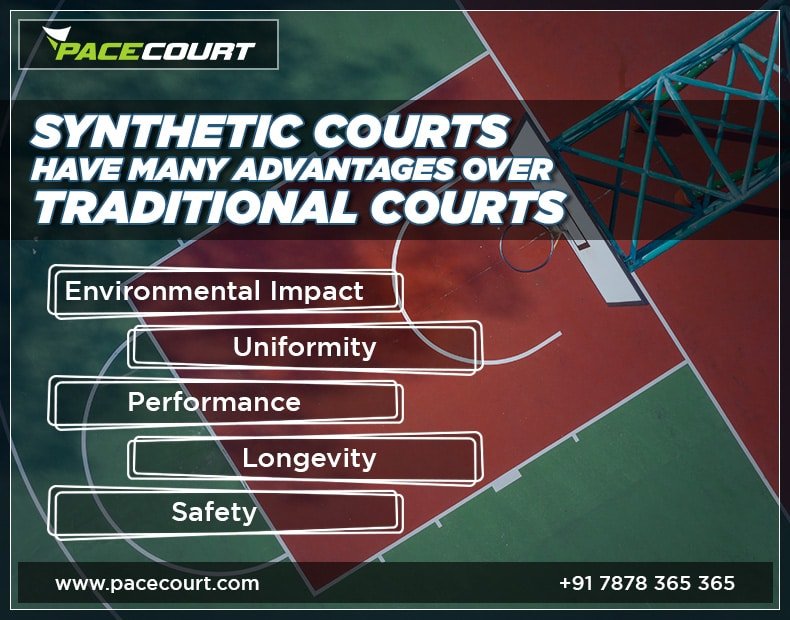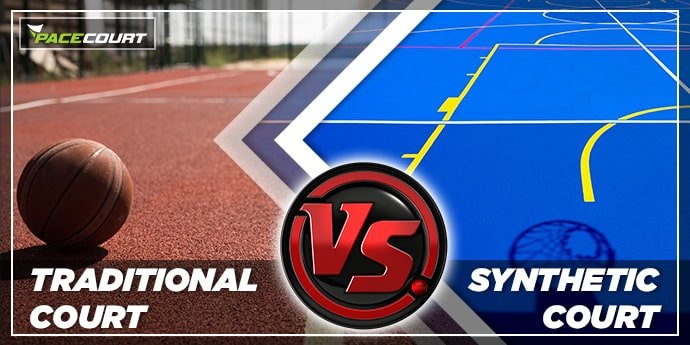Introduction:
When it comes to sports facility design, the choice between a synthetic court and a traditional sports court is very significant, because it affects not only the performance, maintenance, and experience of players but also the comfort of their owners. As a leading producer of synthetic acrylic sports surfaces, Pacecourt understands the importance of a well-considered decision in line with our client’s specific requirements and desires. Hence, we explore both synthetic and traditional sports courts to lay bare their merits. So that those who face such moments can make informed choices. Each type of court has its pros and cons regarding performance, durability, maintenance, customization, etc are concerned. That's why we have decided to guide decision-makers through all these differences. Thus enabling them to choose an appropriate playing surface that will match their goals and improve the quality of their sports facilities. Allow us to walk you through the difference between synthetic and traditional court surfaces for games. Bringing out key determinant factors to this crucial course of action.
Comparison Between Synthetic Courts and Traditional Wooden Courts:
Synthetic Courts have many advantages over traditional sports courts. Let’s start with a detailed comparison:
Uniformity and Performance:
Synthetic Courts give a good playing surface with uniform ball bouncing and foot grip under weather conditions. In contrast, traditional courts made of concrete and asphalt may result in inconsistency in play because of moisture and temperature.
Longevity:
Synthetic courts are built strong enough to fight heavy usage and resist wear and tear. They crack less and wrap less than the traditional ones. This is cost-effective in terms of maintenance and lifespan because it makes synthetic courts last longer.
Player safety:
The safety of players is one thing that synthetic courts are built to ensure and they are often installed with shock absorbers or cushioning as well. Indeed, this is a huge advantage for high-impact sports such as basketball and tennis. On the other hand, traditional courts can cause more accidents since they are not softer.
Environmental impact:
Many materials used in making synthetic courts are environment friendly and can be recycled or re-purposed after their life span ends. Pacecourt provides environmentally friendly material for the synthetic sports court surface.

Conclusion:
In conclusion, Synthetic courts are a far better choice for sports facilities than traditional sports courts. Synthetic courts have unmatched evenness, toughness, and customization choices for players’ safety and environmental sustainability among other advantages. Synthetic courts ensure fair and exciting play across all levels by providing an even playing surface irrespective of weather conditions. Consequently, the life span is lengthy as these surfaces are durable. And do not wear out fast hence leading to reduced maintenance costs thus making them an economical investment in the long run.
Moreover, Synthetic courts offer various customization options, enabling each facility to incorporate its identity into the court. Its aesthetics and emphasis on matters of player safety and environmental sustainability buttresses why synthetic courts are better than their traditional ones.
After differentiating between synthetic and traditional sports courts, we get that when it comes to maximizing investment value synthetic courts are the best. Also for improving athletes’ playing experience. They set a standard for excellence in sports court construction that ensures a winning experience for players because of their numerous benefits.


